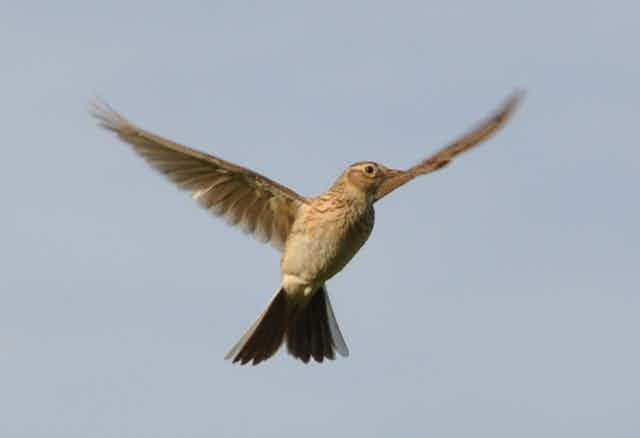New Zealand has an audacious plan to protect its native birds. The country has pledged to rid itself of introduced mammalian predators by 2050 and, this year, will spend $20 million on the Battle for the Birds, one of the largest predator control programmes in the country’s history, across more than 800,000 hectares of land.
Of the 168 bird species that are native to New Zealand, four in five are in trouble, according to a report published last month by the Parliamentary Commissioner for the Environment. New Zealand’s native birds deserve all the help they can get, but this should not detract from the fact that new data show that several introduced bird species are also disappearing.
European settlers arrive with avian cargo
The early settlers brought 130 bird species to New Zealand, and 41 of them established. Given that in lowland areas in the Canterbury province, for example, less than 1% of the original biodiversity remains, perhaps we should place greater value on non-native biodiversity, faute de mieux.
Not everybody agrees with the value of non-native birds. In 1883, Te Whiti was the leader of a peaceful resistance movement at Parihaka, protesting about the sometimes violent confiscation of land by European settlers. He cared about endemic fauna and wrote: “it was not good work bringing those birds out here; they eat all the potatoes and the oats; they are not good birds to bring out … were there not plenty of good birds in New Zealand that eat no man’s food?”
A key recent development, however, which appears to be raising New Zealanders’ awareness of the value of introduced birds is the New Zealand Garden Bird Survey, organised by Eric Spurr of Landcare Research. This is an example of well-managed citizen science, garnering the help of New Zealanders to make systematic observations. After a decade of data gathering, the results show that at least six non-native species - starling, song thrush, blackbird, goldfinch, chaffinch, and dunnock - have declined since the survey started.
Silent gardens
The counts are only of birds in gardens, and the reasons for the declines have not been determined, but the picture is beginning to mirror the dramatic declines in bird populations in Europe over the last 40 years. Even the common starling is declining in Britain, at the rate of 150 birds for every hour since the 1980s. The skylark too has suffered dramatic changes in its numbers in western Europe. A major decline of 75% between 1972 and 1996 put in the Red List.
In Europe, these birds have played an enormous part in art, poetry and literature for hundreds of years. One is reminded of the poem The Lark Ascending by Meredith, and Vaughan Williams’ music on the same theme. In art, birds such as the goldfinch have featured in work by Fabritius and Tiepolo, and throughout the Renaissance period this bird’s blood-red face and its habit of feeding on thorny thistles led to its association with Christ on the cross. Even the Beatles sang a song called Blackbird, in 1968.
In New Zealand, introduced bird species do not seem to generate the same level of affection as endemic ones, such as the tui. In Canterbury, flocks of rooks, which are a key part of the English countryside, were common, but they have been poisoned and shot almost to extinction.
Nature’s health benefits
International research is clearly showing the restorative benefits of “a dose of nature”, such as a walk in the countryside. Recently, Lin Roberts and colleagues at Lincoln University wrote a major report for the New Zealand Department of Conservation which analysed and quantified the contribution of native ecosystems to New Zealanders’ mental health. However, we can’t afford to ignore the contribution that our non-native flora and fauna make to our sense of place and well-being.
It is quite possible that the contribution which introduced bird species make to New Zealand is also delivering other ecosystem functions and services. They eat weed seeds and pest insects, pollinate native shrubs and trees and distribute the seeds of native and endemic plants, just as our endemic birds used to do before their numbers were drastically reduced by New Zealand’s introduced predator fauna.
In Britain, urbanisation, fragmentation of the countryside and intensification of agriculture are being associated with these huge losses. In New Zealand, there have been dramatic changes in the farming landscape over the last decade or so. Are these changes likely to impact on the surveys of garden birds? It would be foolish to speculate too boldly on whether farming intensification has impacts on garden bird numbers as there is no serious monitoring of farmland birds.
However, any declines there could be yet another warning of this country’s biodiversity loss. Male skylarks used to sing in the sky above my house when we were surrounded by low-intensity farming, but now I see and hear virtually none. We are beginning to lose our under-valued introduced bird species and this should be a cause for concern.

